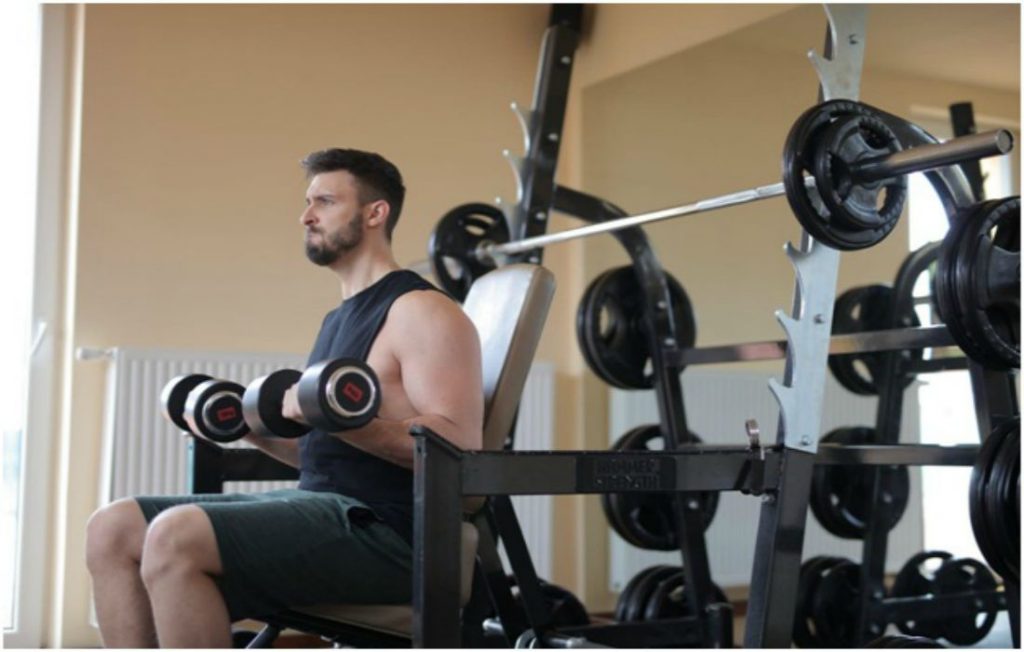Do you dream of building muscles, but the thought of lifting weights is scaring you? If you are here, it is safe to assume that your answer is yes. When it comes to growing muscles, it is a common myth that only lifting more weights can get you there. But, there is no truth to it. If you are looking for ways to build muscles without adding too many weights, read on, and find out.
Easy ways to add muscles without adding weight to the bar:
If you’re not the kind to be lifting heavy weights, here are five ways by which you can still build muscles:
1. Increase the density:
It is a known fact that muscles start growing when they receive extra pressure or tension. People start adding more weight to their workouts to achieve that. But, if you cannot increase the amount of weight that you carry, you can simply increase the density of the workout.
Are you wondering what density is? Well, it is the amount of work you can do within a limited time. You can do more reps in a limited period to increase the density. Decreasing the rest period between the sets will give you more time to do the exercises and get bulky muscles. It helps increase the feeling of fatigue along with metabolic stress, which can lead to increased intensity and also test your resilient strength.
Pro tip: You don’t have to decrease the rest period drastically. Only cutting down 5-10 seconds between the sets can bring you noticeable results. If you are having trouble amping your performance, you can buy anabolic steroids to help you with it.
2. Try doing isometrics:
Isometrics are nothing but exercises in which you have to hold your body in a particular position for some time. All you can do is add a pause while you are performing the routine exercises in the gym. They can be extremely helpful in growing muscles exponentially, even while you’re not lifting extremely heavyweights.
Isometrics can help establish a stronger relationship between your mind and muscles to isolate the muscle groups in a better way. You will be able to focus separately on each group and help them grow. Besides that, there is no momentum, which leads to the breakdown of the muscle fibers of the targeted area.
Pro tip: While you are holding the barbell over your head or benching with weights, hold it for only 2 seconds. It will add stress to the targeted muscles and help grow it.
3. Alter the rep ranges:
A majority of athletes alter their reps between 6 to 12, but what is the ideal rep range for you? If you go for lower reps, you will need to increase the sets and lift more weights to stimulate the muscles. But, if you increase the reps even with lesser weight, the muscles stay under tension for a longer time. It is during this time that your muscles will actually work and grow.
Your body craves change, so it is best to alter the ranges of rep. Mixing between lower and higher reps will keep your muscles on the toes and add stress to the musculoskeletal system to facilitate growth.
Pro tip: If your rep ranges around 6-8 on a daily basis, you can notch it up till 12 on a few days in between. It will help you go the extra mile and get better results.
4. Change your workout:
If we are talking about change, you can also alter the exercises and the order in which you carry them out. When you keep performing the same exercises in an identical pattern each day, the body gets used to it, and it hinders the growth.
You can break down the exercises into small segments and then see where you can adopt an alternative approach. By adding variety, you will force your body to adapt to the new approach in a limited time and then perform it. It can not only improve motor patterns but also stimulate muscle hypertrophy.
After you have changed the exercises, you must also change the pattern. Switch the order in which you do your regular exercises to force the muscles to work in a new way. It will ensure that your body doesn’t get too familiar with the routine, and is always up for challenges. You will put more pressure on the muscles to build strength.
Pro tip: Change the pattern after every 2 to 3 weeks to ensure your body doesn’t get bound by it.
5. Improve the recovery process:
If you have set a workout schedule and stick to it religiously, there are chances that you might be too comfortable with it by now. You are going to the gym on the same days, doing the same exercises, lifting the same weights. But if you wish to alter the density of the workouts, you will need to make changes to the set schedule. It can take a serious toll on your body if you don’t get a sufficient recovery period.

In reality, you will only be able to increase the density of the workout if you can recover from the previous workout. The more rested you will be, the better you will be able to perform in the gym and build your muscles.
Pro tip: You must focus on having a nutritious diet, sound sleeping pattern, and managing the stress levels to ensure you are able to recover.
Final Thoughts: While many trainers and body-builders swear by the fact that only heavyweights pave the way to bigger muscles, you don’t have to believe it. If you have been lifting heavy weights for too long, without seeing any noticeable results, it is time to change things. By making changes to the workout density, reps, exercises, and their pattern, and also ensuring you recover properly, you can get bulky muscles. Follow these points mentioned above and open doors to a muscular, well-built body without adding weight to the bar.

